Finding My Inner Ultrapedestrian at Chinook Pass
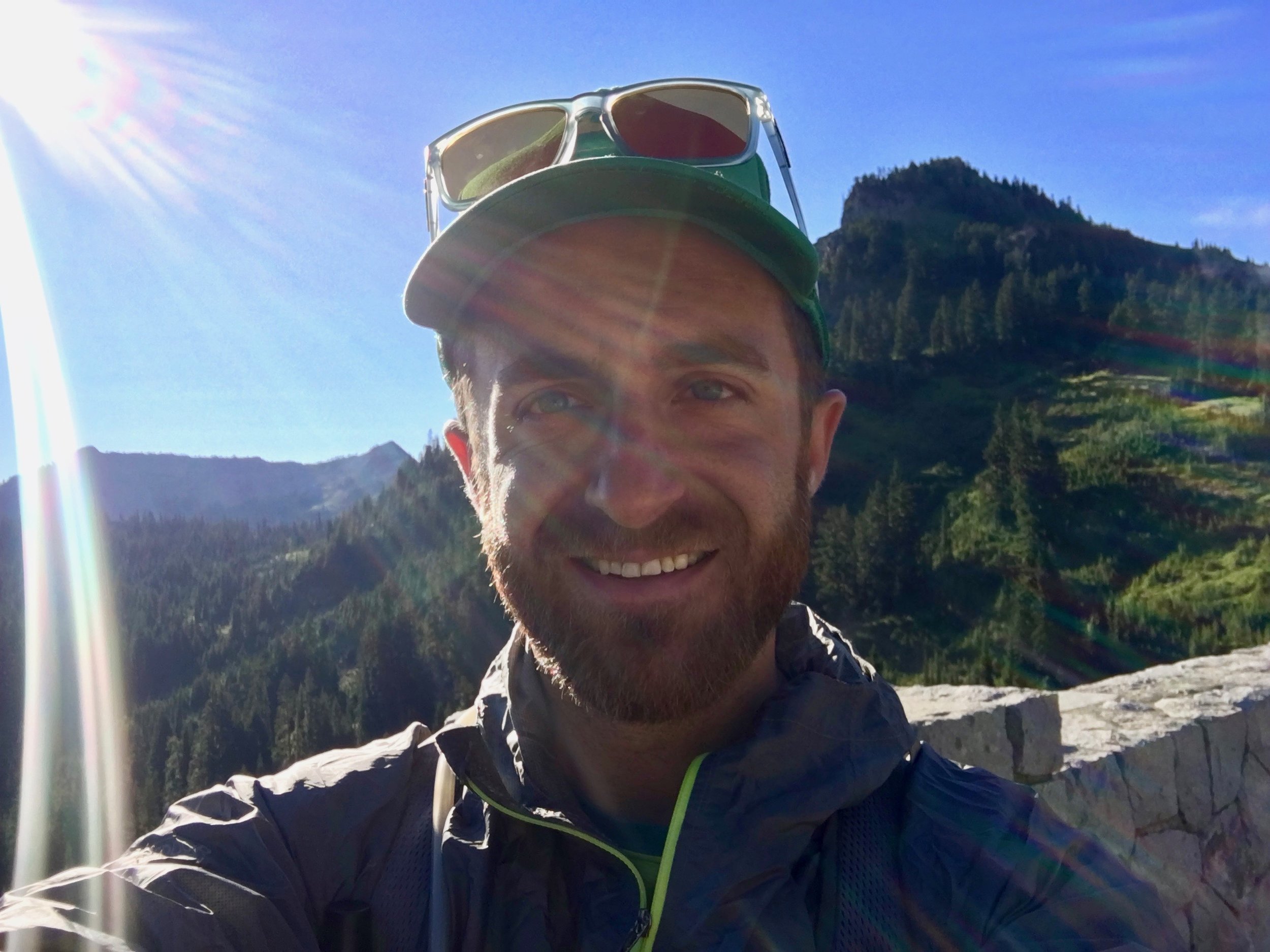 While it was one of last year’s Ultrapedestrian Wilderness Challenge routes (trails don’t go out of style, right?), Chinook Pass looked to me to be the best place to dip my toe into the UP water. Or really, both feet. While I had heard of these tough, self-supported routes for some time, and have known Kathy and Ras for years, I had never attempted one of these running challenges. The Chinook Pass route looked the like the perfect introduction. The 31-mile loop route is easy to access from just outside of Rainier National Park in the Wenatchee Forest, is entirely on marked trails and includes a trek on the PCT. Triple win!
While it was one of last year’s Ultrapedestrian Wilderness Challenge routes (trails don’t go out of style, right?), Chinook Pass looked to me to be the best place to dip my toe into the UP water. Or really, both feet. While I had heard of these tough, self-supported routes for some time, and have known Kathy and Ras for years, I had never attempted one of these running challenges. The Chinook Pass route looked the like the perfect introduction. The 31-mile loop route is easy to access from just outside of Rainier National Park in the Wenatchee Forest, is entirely on marked trails and includes a trek on the PCT. Triple win!
[tweet https://twitter.com/joelwho/status/787125941193498624]
The night before the run I loaded the GPS track into my watch and filled my pack with essentials—water filter, 2-liter water bladder, cliff bars for hours, etc. The weather looked perfect—one of those goldilocks days—not too hot and not too cold with a bonus of sun for miles. After telling my roommate where I was headed and who to call in case I never returned, I walked my pup Luna a little past 6am and then drove out to the backside of Mt. Rainier. At the trailhead I met another skinny old man wearing Altras and a race vest (a twin of how I sometimes view myself).
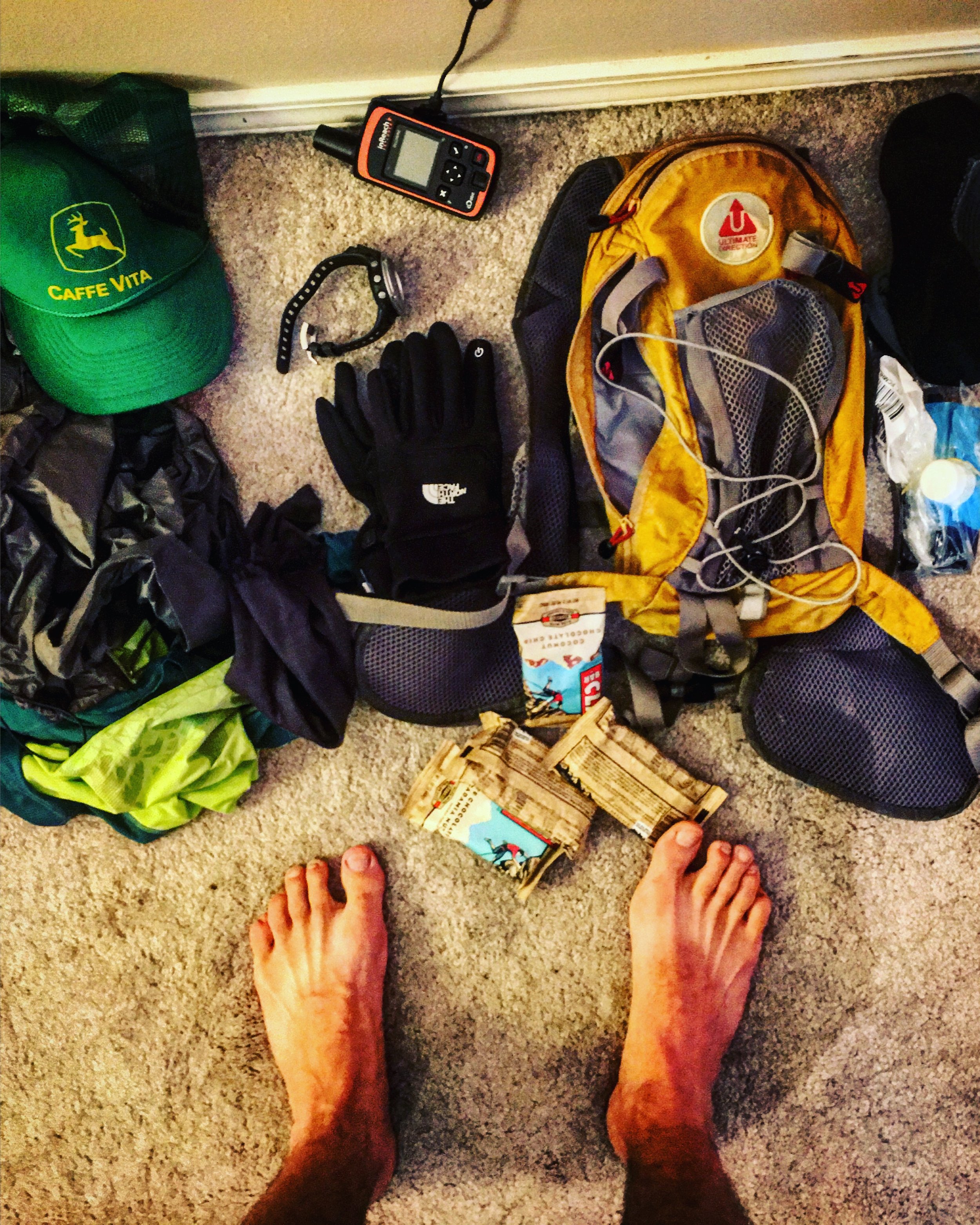
This mountain runner sported a hydration pack and Altras, so I knew he’d probably spent a few miles on the trails. A quick conversation with him confirmed my guess. John and I shared pleasantries for a minute, then he headed off in the opposite direction and I proceeded to cross a bridge that arches across highway 410 before dropping down at the start of the trail. As I headed out in the morning air a touch of fog rolled over the pass and burned off in dramatic fashion. The air—so fresh and so clean (start humming Outkast in 3…2..).
Now because this was a loop trail you could either experience the course in clockwise or counter-clockwise directions. John suggested I go in a clockwise direction so I took his advice and began the loop floating down the rolling trail. Instantly I was rewarded with beautiful meadows, mossy trees and alpine lakes, and I had yet to even enter Rainier National Park. The first six miles or so were all in the national forest. I knew this for certain because there were a half dozen other hikers out on the trail and they trekked along with dogs, something that is prohibited at most locations in the park. (Luna, I’m sorry, we’ll have to come back. If I knew, you’d join me on a lovely out-and-back.)
The miles just flew by mostly because for the first few hours the route descended in a series of steps. The pass is at 5,800 feet but by the time you hit mile 19 I was at 2,200—my type of running. I stopped for plenty of photos and to enjoy the scenery. Moss, trees and sky--this is why I love trails.
One of the most attractive qualities of the UWC concept for me is the fact that it’s not a traditional race. If this was a 50k competition, or really any distance, I would feel pressured by my own internal persistence to limit my snack breaks and chit-chat. Instead I would push myself to get across the finish line as fast as possible—giving up sightseeing just to shave a few minutes off my time.
For me this practice really makes no sense because I’m not going to win any races or grab endorsements, but races just do that to me. The Ultrapedestrian Wilderness Challenge though is different. I had permission to meander, to investigate lakes and to pause for photos. I wasn’t racing anyone else, especially myself.
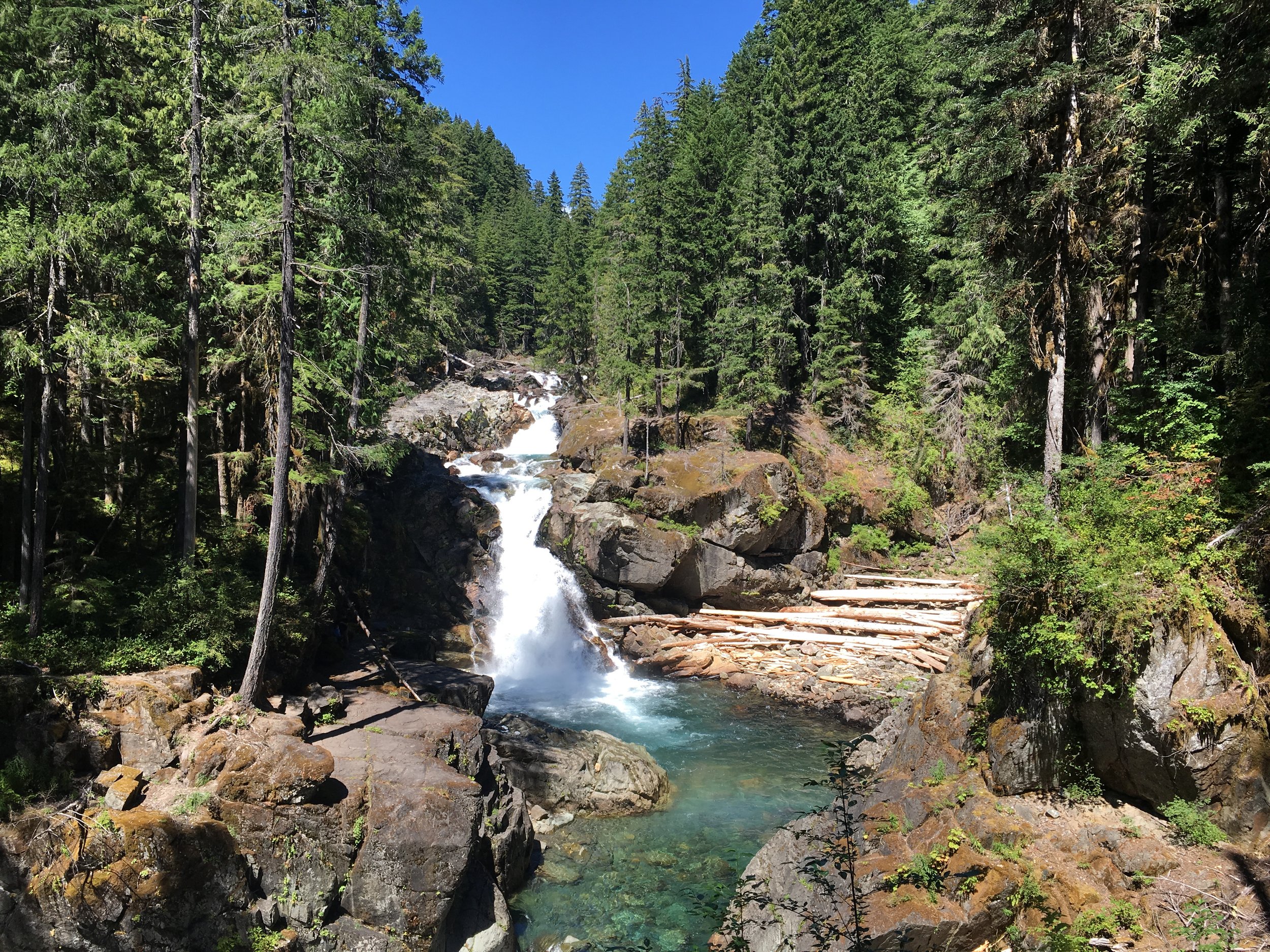
At mile 20 I began to climb—up, up, up. Around this time I also ran into a few hikers completing the same loop I was running, but they were hiking over three days instead of fitting the miles into a single push. Both were engineers with Boeing. As a group we reflected on the day—remarking on how perfect the weather was, how scenic the vistas were and how lucky we were to enjoy the day outside. When I wrapped up my break and began pressing on the couple offered me a quick, but ominous warning.
“There are lots of blow-downs in the last five miles—like 50!”
“Thanks!” I called back, but as I took in the number they shared I didn’t fully believe their count. So far the trail had only a scattering of trees crossing its path.
“It’s probably like a dozen and they’re just being dramatic”, I thought.
In reflection, this mental note did not take into account that the couple were trained ENGINEERS—as in people known for their expert precision and attention to detail. Soon I’d learn the truth.
Miles 20-25 climbed, but at a reasonable grade. Just a little past mile 25 I turned onto the Eastside Trail and began to encounter fallen trees. First, just a handful of branches—easy to step over. Soon thereafter smaller, young trees also crossed the path. Within a half mile I began to enter the meat of the blow-downs. Yeah, so this is what the hikers were talking about. Tree after downed tree. Each required me to climb up and over, down and around, or if I'm lucky, duck under.
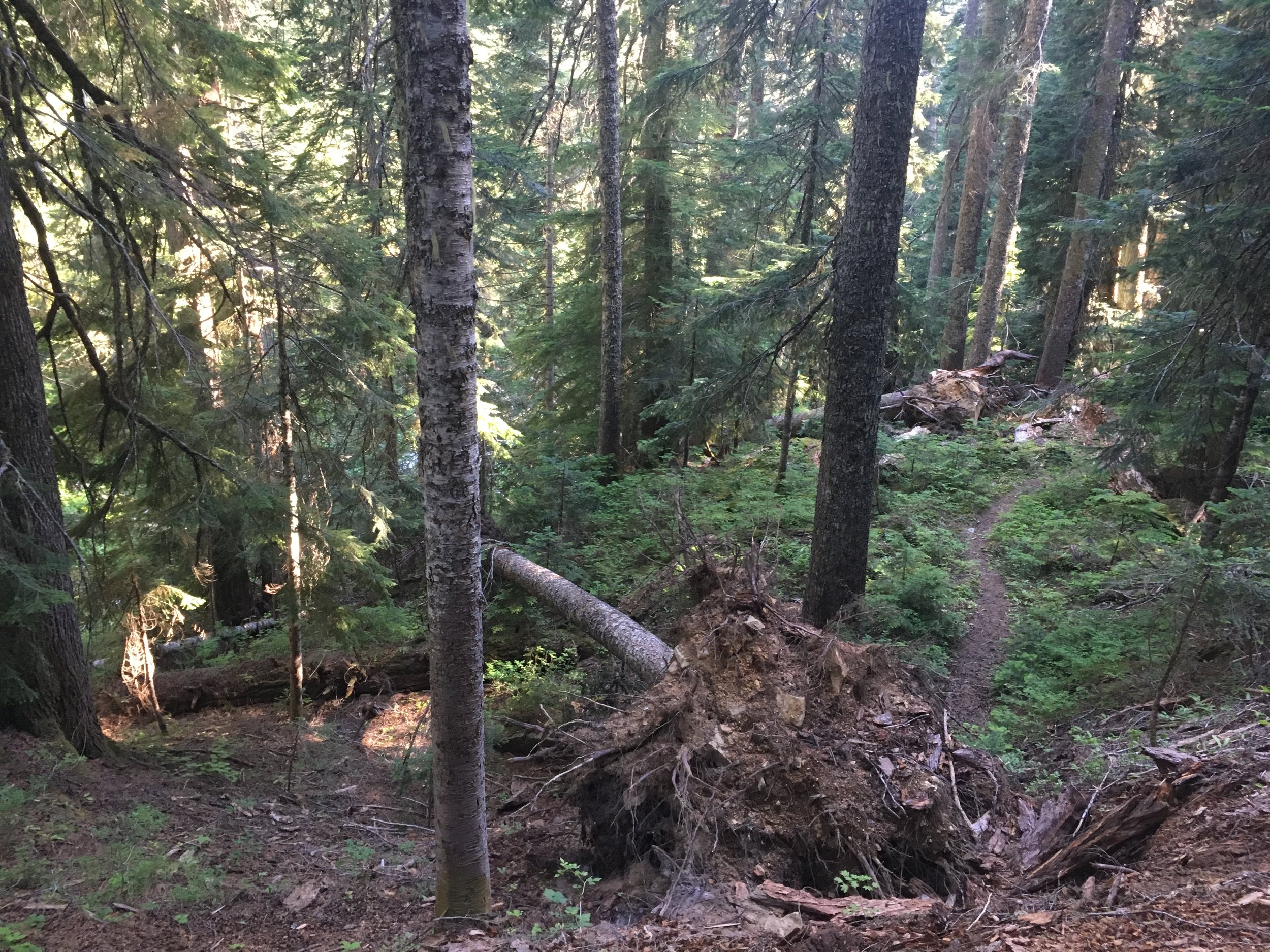
There were fallen trees that dropped parallel onto the trail to obliterate any discernible way forward. I crawled, climbed and scrapped my way over each mountain of branches, dirt and roots. Each one I passed, I made a mental note, “5….6….7”. The Eastside trail was definitely not loved by the Forest Service. They might just have a vendetta against this section of dirt because it was obvious no one had cleared it in years, NAY!, decades.
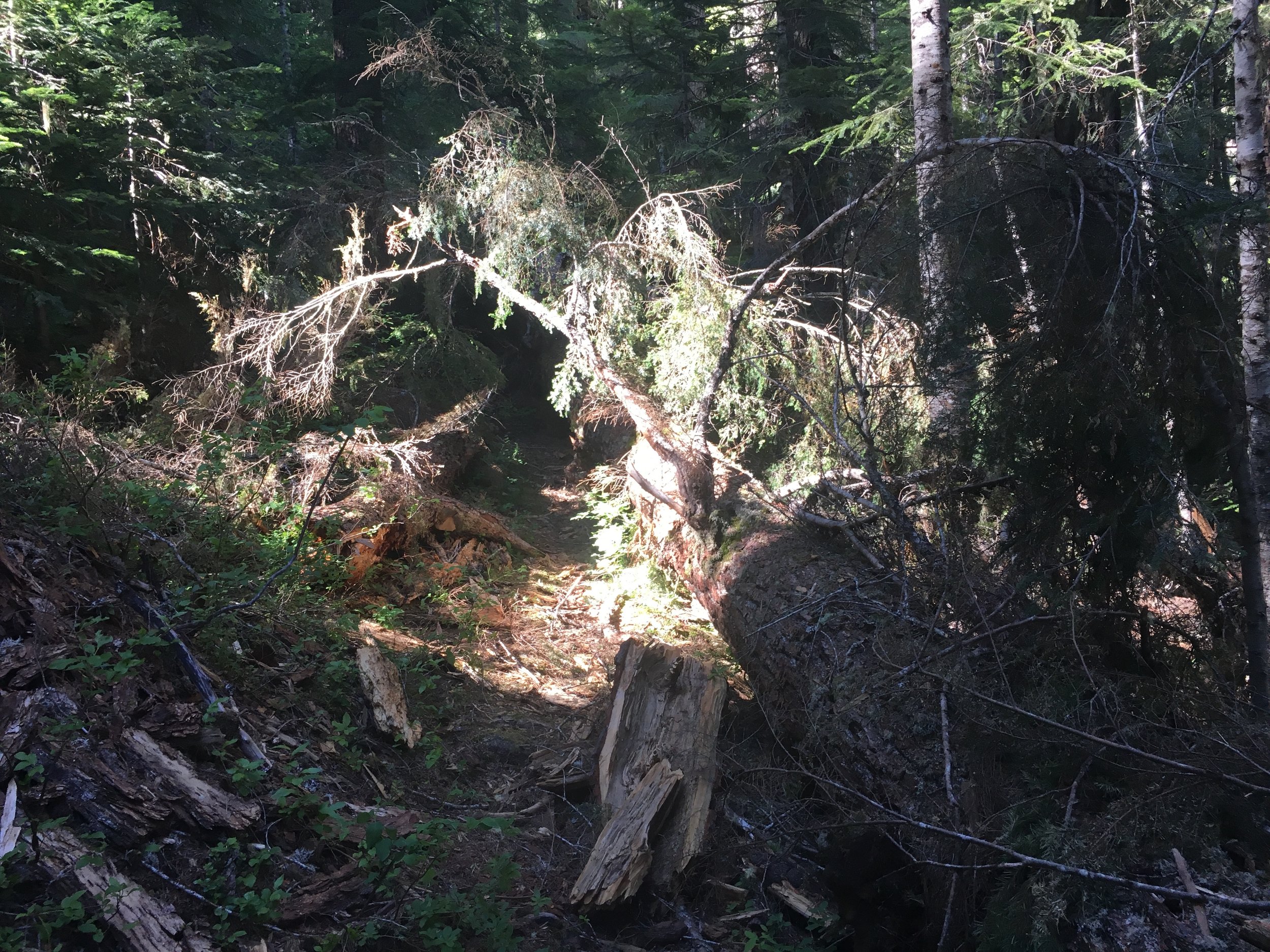 After it was all said and done, I counted exactly 52 blown downs on the trail making the final five miles of the Chinook Pass Ultrapedestrian Challenge a beasty affair. All in all, the day was perfect. I got to spend it outside in a beautiful place, challenge myself on the trails and made it home in time for beer and pizza with my pup.
After it was all said and done, I counted exactly 52 blown downs on the trail making the final five miles of the Chinook Pass Ultrapedestrian Challenge a beasty affair. All in all, the day was perfect. I got to spend it outside in a beautiful place, challenge myself on the trails and made it home in time for beer and pizza with my pup.
Thanks to Jessica Kelley for intel on the trail, and of course to Ras and Kathy for finding special outings around the region and for promoting the practicing of exploring the outdoors.
